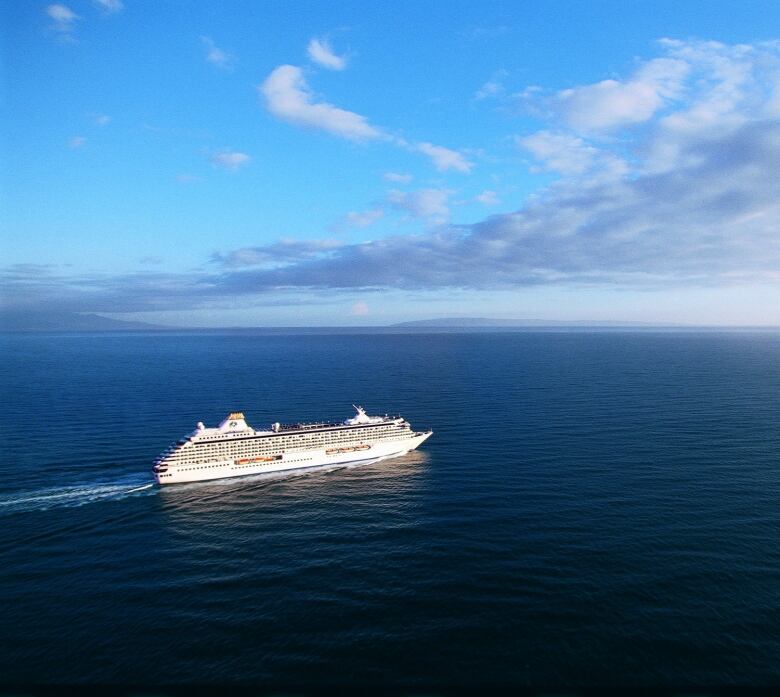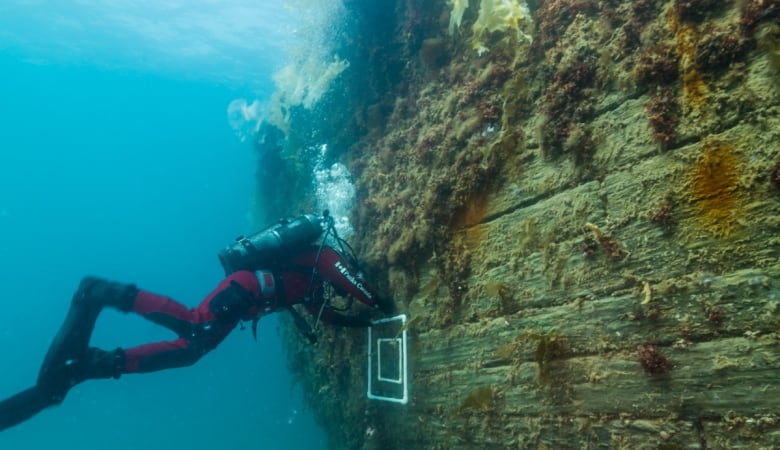Discovery of Franklin expedition ships pits science against tourism: Bob McDonald
Tour companies will be eager to visit site of wrecks, which could threaten preservation of the sites

The discovery of Sir John Franklin's ship HMS Terror this week,along with HMS Erebus two years ago, provide valuable tools to unlocking the mystery of the doomed 1845 expedition. Now that their locations are known, the wrecks will likely become popular destinations for the growing Arctic tourism industry, which will be a challenge for their preservation.
Thanks to the cold, clear Arctic waters, both ships have been preserved in remarkable condition, especially the Terror. Its wooden hull is so intact, it looks like it could be refloated. The three masts are still standing, and the windows are not broken. Infact, the preservation is so good, archaeologists expect to find artifacts inside as detailed as written documents still lying in drawers. The ships are incredible time capsules.

In a strange twist of irony, the same week that Terror was found, the first full-sized cruise ship, Crystal Serenity, carrying 1,600 tourists on board, sailed through the Northwest Passage.It's a voyage that Franklin and his crew struggled for three years to accomplish, an unfinished journey that ultimately cost them their lives.
Besides demonstrating how much the Arctic has warmed in the last 150 yearsbecause ofclimate change, the cruiseship symbolizes how the tourist industry is capitalizing on the newly opened waters in the North to bring more and more people to one of the last true wilderness areas left on the planet.
Wrecks attract looters, souvenir hunters
Tour companies will certainly put pressure on the government of Nunavut to allow them to visit the Franklin wrecks, which are in shallow enough water that divers and small submarines will be able to explore the sights directly.
This raises an issue that has troubled archaeologists in other sites around the world. Once the location of a site is known, looters, souvenir huntersand careless tourists have damaged and even destroyed historical treasures. Measures must be taken to ensure this doesn't happen with the wrecks of the Franklin expedition.
The first task on a newly discovered site is to scientifically document every artifact in its original position. It is a painstaking process that involves photographs, videos, 3D laser scans, mapsand an encyclopedia worth of information on every single item that is found. The scientists have the same attitude as crime scene investigators who say, "Don't touch anything until we get there."

In 1985, when the wreck of the Titanic was found, Dr. Robert Ballard, one of the leaders of the expedition, felt the ship should be left alone as a gravesite to respect the more than 1,500 people who lost their lives in the disaster. But once the location of the sunken ship was known, other expeditions returned to bring up hundreds of artifacts that were exhibited around the world, and tour companies offered dives to the wreck in deep water submersibles. Since then, the ship has shown visible deterioration, in part, because of these salvage and tourist trips.
Will Erebus and Terror suffer the same fate, or can they be preserved as living museums?
Preservation vs. education
Of course, the counter argument is that recovering artifacts from shipwrecks and placing them in museums allows millions of people to see history with their own eyes and keep the story alive.
- Franklin expedition, exploration gets cross-Canada exhibit
- Shipwreck found in Arctic ID'd as HMS Erebus
When Howard Carter uncovered the tomb of Tutankhamun in 1923and saw"wonderful things" inside, it was the largest and most valuable treasure of ancient Egyptian artifacts ever found. But unlike the fictional character Indiana Jones, who crashes into tombs like a bulldozer, knocking over precious objects just to get away from snakes, it took Carter's team two and a half months to document all the objects in the first chamber before they even got to the actual sarcophagus in the burial room.

Now, those invaluable artifacts fill an entire section of the Egyptian museum in Cairo, and many of them, especially the famous golden mask, have circled the globe in special exhibitions.
Somewhere there has to be a balance between removing articles from historic sites for public educationwhile leaving the sites themselves intact.Efforts must be made to ensure nothing ends up in the hands of looters and private collectors who trade them on the black market.
The harsh Arctic environment has preserved the Franklin ships from more than a century and a half. But just because that environment is changing, it doesn't mean our respect for those frozen relics and their tragic story should change along with itand be exposed to the ravages of human hands.













_(720p).jpg)


 OFFICIAL HD MUSIC VIDEO.jpg)
.jpg)



























































































